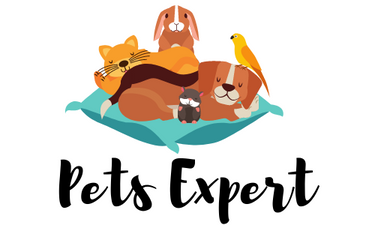A dog’s coat serves more than an aesthetic purpose—it reflects their overall health and well-being. As a professional groomer, understanding the vital link between nutrition and coat condition is crucial. This blog delves into the profound impact of diet on a dog’s coat, emphasizing the significance of grooming from the inside out.
Understanding the Basics:
A dog’s coat consists of two layers: the outer guard hairs and the underlying fur. The condition of these layers is influenced by a variety of factors, with diet playing a pivotal role. A well-balanced diet provides the necessary nutrients for optimal coat health, including proteins, fats, vitamins, and minerals.
Proteins for Coat Structure:
- Proteins are the building blocks of a dog’s coat. High-quality protein sources, such as lean meats or fish, contribute to strong and resilient hair. Essential amino acids found in proteins are crucial for coat structure, promoting a lustrous and healthy appearance.
Omega-3 Fatty Acids for Shine:
- Incorporating omega-3 fatty acids into a dog’s diet is key to achieving a glossy coat. These essential fatty acids, commonly found in fish oil or flaxseed, contribute to skin health, reduce inflammation, and add a beautiful shine to the coat.
Vitamins and Minerals for Overall Health:
- A well-rounded diet rich in vitamins and minerals is essential for a dog’s overall health, which extends to their coat. Vitamin A, Biotin (B7), and Zinc play vital roles in maintaining skin and coat health. Deficiencies in these nutrients can lead to dullness, dryness, and skin issues.
Common Diet-Related Coat Issues:
Dull Coat:
- A lacklustre coat is often a sign of nutrient deficiencies. Addressing this issue requires assessing the dog’s diet and introducing high-quality, nutrient-dense foods.
Excessive Shedding:
- While shedding is a natural process, excessive shedding can be a result of an imbalanced diet. Omega-3 fatty acids can help reduce shedding and promote a healthier coat.
Dry or Itchy Skin:
- Dry or itchy skin may indicate a deficiency in essential fatty acids. Introducing sources of omega-3 and omega-6 fatty acids can alleviate these issues and contribute to a softer, more supple coat.
Grooming Techniques Complementing Diet:
Regular Brushing:
- Brushing is a fundamental grooming practice that not only removes loose hair but also stimulates blood flow to the skin. Regular brushing distributes natural oils, promoting a healthier coat.
Bathing with the Right Shampoo:
- Choose shampoos enriched with natural ingredients, avoiding harsh chemicals that can strip the coat of essential oils. A nourishing professional dog shampoo can complement a healthy diet, enhancing coat texture and shine.
Professional Grooming:
- Regular visits to a professional groomer can help maintain coat health. Groomers are equipped to provide specialised treatments, including moisturising baths and coat conditioning, ensuring dog’s coat stays in top condition. You can buy professional dog grooming supplies from Pride & Groom as well.
Nutrition’s Role in Coat Health:
The quality of a dog’s coat is intricately tied to their nutritional intake. Proteins, essential fatty acids, vitamins, and minerals play key roles in maintaining a healthy coat. Proteins, for instance, are the building blocks for hair growth, while omega-3 and omega-6 fatty acids contribute to a shiny, lustrous coat. Nutrient-rich diets support the skin’s health, preventing issues like dryness, dandruff, and excessive shedding.
Educating Clients on Proper Feeding:
As a groomer, you’re uniquely positioned to educate pet owners on the correlation between diet and coat health. Encourage them to choose high-quality, well-balanced dog food that meets their pet’s specific needs. Discuss the importance of protein sources, the inclusion of omega fatty acids, and the role of vitamins and minerals. Emphasise that a healthy coat starts with a nutritious foundation.
Addressing Dietary Concerns During Grooming:
During grooming sessions, remain vigilant for signs of poor nutrition or underlying health issues. Dull, brittle coats, excessive shedding, and skin irritations could be indicators of an inadequate diet. Take the opportunity to discuss these observations with pet owners, recommending a visit to the veterinarian for a comprehensive health assessment and dietary evaluation.
Tips for Improving a Dog’s Diet and Coat Health:
Choose Quality Dog Food: Opt for premium dog food brands that prioritise quality ingredients and are tailored to the specific needs of the dog’s breed, age, and size.
Supplement Wisely: In consultation with a veterinarian, consider adding supplements like omega-3 fatty acids or a multivitamin to address specific coat concerns.
Hydration Matters: Ensure dogs have access to clean, fresh water at all times. Hydration is essential for overall health, including coat condition.
Regular Vet Check-ups: Regular veterinary check-ups help identify and address any dietary or health issues early on, preventing long-term coat problems.
Conclusion:
Grooming a dog is not just about appearance—it’s about promoting their holistic well-being. By recognizing the profound impact of diet on a dog’s coat, groomers can play a pivotal role in educating pet owners and fostering healthier, happier canine companions. A collaborative approach between groomers and pet owners ensures that every grooming session contributes to the overall health and radiance of the dog’s coat, from the inside out.
